Bone Bricks: The Effect of Architecture and Material Composition on the Mechanical and Biological Performance of Bone Scaffolds
- PMID: 35284712
- PMCID: PMC8908495
- DOI: 10.1021/acsomega.1c05437
Bone Bricks: The Effect of Architecture and Material Composition on the Mechanical and Biological Performance of Bone Scaffolds
Abstract
Large bone loss injuries require high-performance scaffolds with an architecture and material composition resembling native bone. However, most bone scaffold studies focus on three-dimensional (3D) structures with simple rectangular or circular geometries and uniform pores, not able to recapitulate the geometric characteristics of the native tissue. This paper addresses this limitation by proposing novel anatomically designed scaffolds (bone bricks) with nonuniform pore dimensions (pore size gradients) designed based on new lay-dawn pattern strategies. The gradient design allows one to tailor the properties of the bricks and together with the incorporation of ceramic materials allows one to obtain structures with high mechanical properties (higher than reported in the literature for the same material composition) and improved biological characteristics.
© 2022 The Authors. Published by American Chemical Society.
Conflict of interest statement
The authors declare no competing financial interest.
Figures



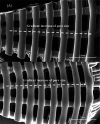
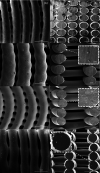
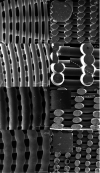
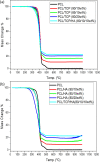


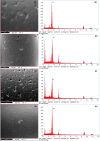

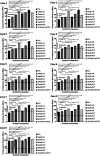



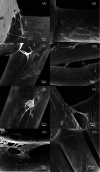


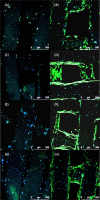
Similar articles
-
Geometry-Based Computational Fluid Dynamic Model for Predicting the Biological Behavior of Bone Tissue Engineering Scaffolds.J Funct Biomater. 2022 Jul 27;13(3):104. doi: 10.3390/jfb13030104. J Funct Biomater. 2022. PMID: 35997442 Free PMC article.
-
Accelerated Degradation of Poly-ε-caprolactone Composite Scaffolds for Large Bone Defects.Polymers (Basel). 2023 Jan 28;15(3):670. doi: 10.3390/polym15030670. Polymers (Basel). 2023. PMID: 36771970 Free PMC article.
-
Investigating the Influence of Architecture and Material Composition of 3D Printed Anatomical Design Scaffolds for Large Bone Defects.Int J Bioprint. 2021 Feb 24;7(2):268. doi: 10.18063/ijb.v7i2.268. eCollection 2021. Int J Bioprint. 2021. PMID: 33997431 Free PMC article.
-
Review on current limits and potentialities of technologies for biomedical ceramic scaffolds production.J Biomed Mater Res B Appl Biomater. 2021 Mar;109(3):377-393. doi: 10.1002/jbm.b.34706. Epub 2020 Sep 14. J Biomed Mater Res B Appl Biomater. 2021. PMID: 32924277 Review.
-
Advances in Filament Structure of 3D Bioprinted Biodegradable Bone Repair Scaffolds.Int J Bioprint. 2021 Oct 13;7(4):426. doi: 10.18063/ijb.v7i4.426. eCollection 2021. Int J Bioprint. 2021. PMID: 34805599 Free PMC article. Review.
Cited by
-
Deep-learning-based inverse design of three-dimensional architected cellular materials with the target porosity and stiffness using voxelized Voronoi lattices.Sci Technol Adv Mater. 2023 Jan 4;24(1):2157682. doi: 10.1080/14686996.2022.2157682. eCollection 2023. Sci Technol Adv Mater. 2023. PMID: 36620090 Free PMC article.
-
Geometry-Based Computational Fluid Dynamic Model for Predicting the Biological Behavior of Bone Tissue Engineering Scaffolds.J Funct Biomater. 2022 Jul 27;13(3):104. doi: 10.3390/jfb13030104. J Funct Biomater. 2022. PMID: 35997442 Free PMC article.
-
Poly-ε-Caprolactone 3D-Printed Porous Scaffold in a Femoral Condyle Defect Model Induces Early Osteo-Regeneration.Polymers (Basel). 2023 Dec 24;16(1):66. doi: 10.3390/polym16010066. Polymers (Basel). 2023. PMID: 38201731 Free PMC article.
-
Accelerated Degradation of Poly-ε-caprolactone Composite Scaffolds for Large Bone Defects.Polymers (Basel). 2023 Jan 28;15(3):670. doi: 10.3390/polym15030670. Polymers (Basel). 2023. PMID: 36771970 Free PMC article.
-
Biological Scaffolds Assembled with Magnetic Nanoparticles for Bone Tissue Engineering: A Review.Materials (Basel). 2023 Feb 8;16(4):1429. doi: 10.3390/ma16041429. Materials (Basel). 2023. PMID: 36837058 Free PMC article. Review.
References
-
- Yao G.; Kang L.; Li C.; Chen S.; Wang Q.; Yang J.; Long Y.; Li J.; Zhao K.; Xu W.; Cai W.; Lin Y.; Wang X. A self-powered implantable and bioresorbable electrostimulation device for biofeedback bone fracture healing. Proc. Natl. Acad. Sci. U.S.A. 2021, 118, e210077211810.1073/pnas.2100772118. - DOI - PMC - PubMed
-
- Al-esnawy A.; Ereiba K.; Bakr A.; Abdraboh A. Characterization and antibacterial activity of Streptomycin Sulfate loaded Bioglass/Chitosan beads for bone tissue engineering. J. Mol. Struct. 2021, 1227, 12971510.1016/j.molstruc.2020.129715. - DOI
LinkOut - more resources
Full Text Sources

